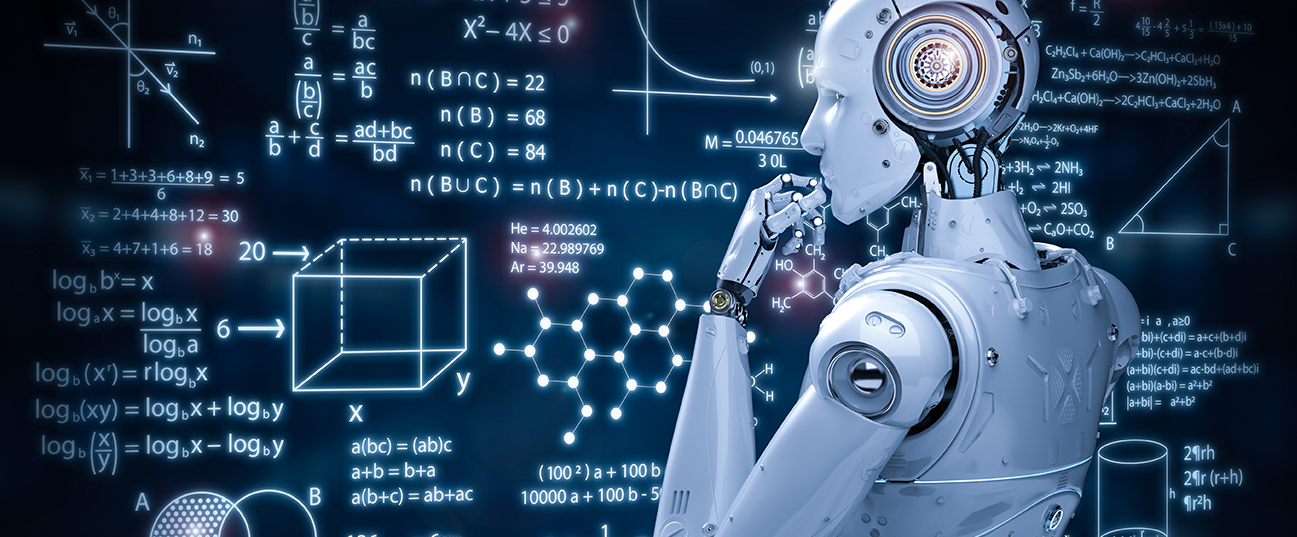Introduction to Machine Learning
Machine learning is a subset of artificial intelligence (AI) that focuses on giving computers the ability to automatically learn and improve the accuracy of outcomes from experience without being explicitly programmed. Machine learning uses data and algorithms to simulate the way humans learn and gradually become more accurate.
The process of learning begins with observations or data, such as examples, direct experience, or instruction, in order to look for patterns in data and make better decisions in the future based on the examples that we provide. The main goal is to enable the computers to learn automatically without human intervention or assistance and adjust actions accordingly.
Why Machine Learning is Important?
As computer and information technologies grow, we are seeing an exponential explosion in the amount of data. This availability of large and ever-growing data has led to huge research into ways it can be processed, analyzed, and acted upon. Since Machines are better suited than humans to this work, That’s why computers are trained to do this in a smart way.
Also Read: What is NLP? How it is shaping our Enterprises?
Through the use of statistical methods, computer software is trained to make classifications or predictions, uncovering key insights within large corporate and customer data. This software helps enterprises keeping track of trends in customer behavior and business operational patterns, as well as supports the development of new products.
Valuable information gathered from these applications drives decision-making within applications and businesses. Data-driven decisions have become a key difference between keeping up with the competition or falling further behind. This data-driven decision-making helps them grow faster and stay ahead of their competition. Many of today’s giant companies, such as Facebook, Google, and Uber, have made machine learning a central part of their operations.
How does Machine Learning Works?
The process of Machine learning can be broken into three parts:
A Decision Process: In general, machine learning algorithms are used to make a prediction or classification. Based on some input data, which can be labeled or unlabeled, analyze datasets and identify patterns to produce a prediction about a pattern present in the data.
An Error Function: This part deals with measuring how good is algorithm’s prediction or estimation, this is done by comparing it to some known models that are available. If the prediction was right or wrong if the prediction was bad how bad it was.
A Model Optimization Process: When prediction comes out wrong, this part of the algorithm looks at it and then updates the way the decision process produces the final decision, so that next time prediction gets more accurate.
Types of Machine Learning
Supervised learning:
supervised machine learning uses labeled datasets to train algorithms to classify data or predict outcomes accurately The computer is presented with example inputs and their desired outputs, given by a “data scientist”, and the goal is to learn a general rule that maps inputs to outputs.
The learning algorithm compares its output with the correct, intended output, tries to find errors in order to adjust the model accordingly. This process continues until the model achieves the desired level of accuracy on the training data.
Supervised learning helps organizations solve a variety of real-world problems at scale, such as classifying spam in a separate folder from your inbox
Unsupervised learning
No labels are given to the learning algorithm, leaving it on its own to find structure in its input. These algorithms try to discover hidden patterns or data subsets without the need for human intervention.
Its ability to discover similarities and differences in information makes it the ideal solution for exploratory data analysis, cross-selling strategies, customer segmentation, image, and pattern recognition.
Semi-supervised learning
Problems where you have a large amount of input data and only some of the data is labeled, and you need to use this smaller labeled data set to guide classification and feature extraction from a larger, unlabeled data set. Semi-supervised learning provides a good medium between supervised and unsupervised learning.
For example, a photo archive where only some of the images are labeled, (e.g. dog, cat, person) and the majority are unlabeled.
Reinforcement learning
A computer program interacts with a dynamic environment in which it must perform a certain goal using a prescribed set of rules. Data scientists also program algorithms to seek feedback about performing its action in terms of rewards and punishment which it receives based on its performance of action.
It is similar to supervised learning but this algorithm does use sample data to trains itself through trial and error. A continuous successful outcome will be reinforced to develop the best policy for a given problem, failure will reinforce it to change its policy about approaching that problem.
Here are some of the real-world applications of Machine learning
- Virtual assistants: Machine learning algorithms are widely used by various applications virtual assistant applications such as Google assistant Siri, Cortana, and Alexa. These smart assistants are using speech recognition technology to interpret natural speech and supply context.
- Business intelligence: Machine learning tools enable organizations to analyze bigger and more complex data while delivering faster, more accurate results. The machine-learning application helps them to build models, identify opportunities, assess risks, strategize, and plan.
- Product recommendation: Many entertainments and e-commerce companies such as Netflix, goggle, Amazon, etc. understand the user interest using various machine learning algorithms and recommend the products as per customer interest.
- Self-driving cars: Self-driving cars are one of the most exciting applications of Machine learning. Tesla company uses an unsupervised learning method to train car models enabling it to detect people and objects while driving.
Advantages of Machine Learning
- Produces Useful Information from Large Data: Machine Learning can analyze large volumes of data and discover specific trends and patterns that would not be possible for humans.
- Learns without human help: Not much human attention is needed since it gives machines the ability to learn. It lets them make predictions and also lets them improve the algorithms on their own.
- Gets more efficient with time: As the amount of data you have keeps growing, your algorithms learn to make more accurate predictions faster, because Machine learning makes them keep improving in accuracy and efficiency
- Ability to handle complex and dynamic data: Machine Learning algorithms can efficiently handle data that are multi-dimensional and multi-variety, and they can perform this in dynamic or uncertain environments.
- Creates Personalize experience for customers: Since Machine learning algorithms have the capability to help deliver a much more personal experience to customers while also targeting the right customers, they are used in a wide range of applications.
Disadvantages or limitations of Machine Learning
- Requirement of Large Dataset to train: Machine Learning requires massive data sets to train on, and data should inclusive/unbiased, and of good quality. It is difficult and time-consuming to prepare such data.
- Requirement of Massive Resources: Machine Learning applications require massive resources to function, they also need time to learn and achieve the desired level of accuracy.
- Pron to Errors: Machine Learning is autonomous but highly prone to errors. If the data set is not enough, or unbiased of and good quality, it may produce biased and inaccurate results.
- Difficult to troubleshoot: Detecting error and Correcting them takes a long time in Machine learning-enabled Applications.
Future of Machine Learning
While machine learning algorithms have been used for decades, Recent Advancements in AI advancements and dramatic growth in computing power has Machine learning have seen massive popularity. Deep learning models, in particular, are used today’s most advanced AI applications.
As machine learning is gaining more and more important to business operations and AI becomes more practical in enterprise settings, the machine learning platform wars will only get more and more intense.
Today more research in AI and Machine learning are heavily focused on developing more general applications. Today’s AI models are extensive trained to produce an algorithm optimized to perform a specific task.
However, some researchers are exploring ways to make models flexible enough that they can apply knowledge and experience gained in one task and apply it to a different task in the future.

